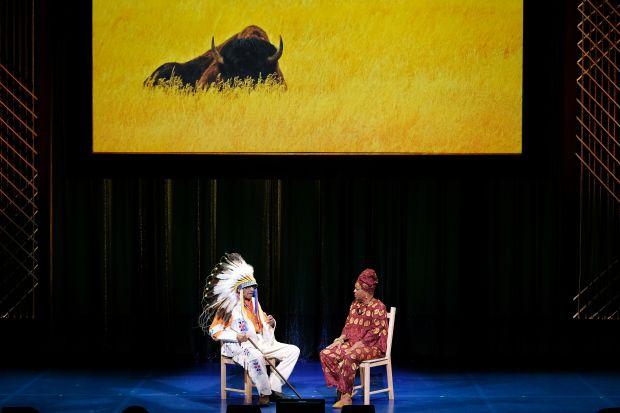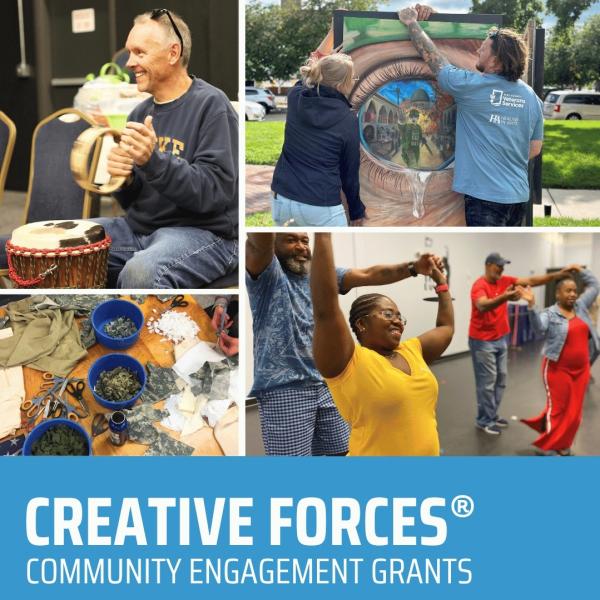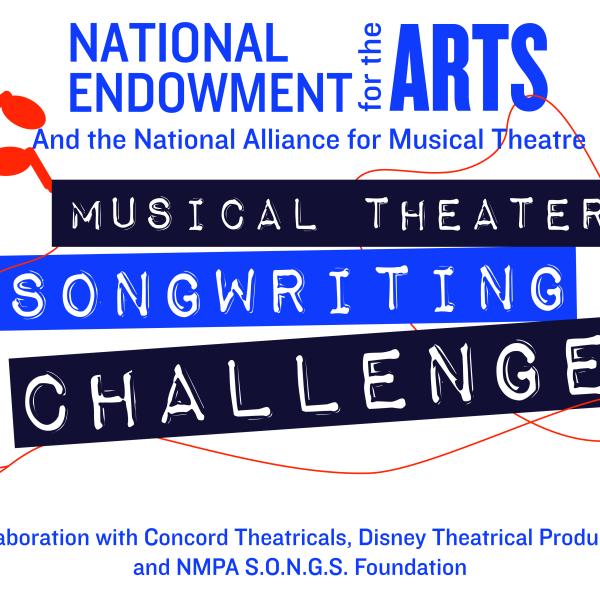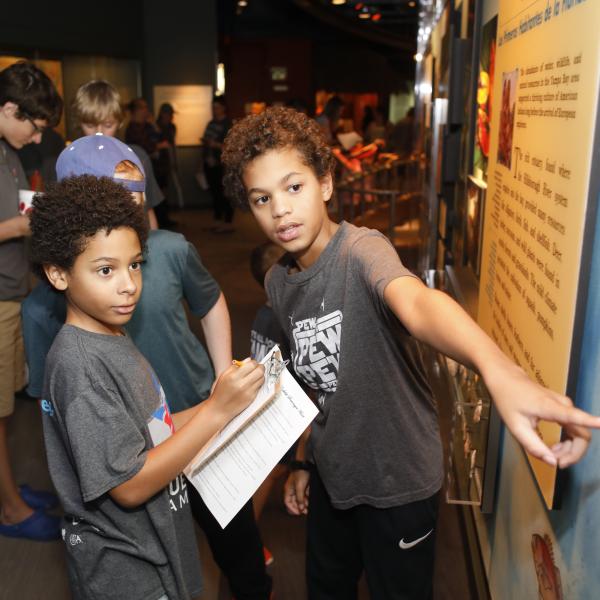National Endowment for the Arts Statement on the Death of National Heritage Fellow Grant Bulltail

Grant Bulltail with concert emcee Queen Nur at the 2019 National Heritage Fellowships Concert. Photo by Tom Pich
It is with great sadness that the National Endowment for the Arts acknowledges the death of Crow storyteller Grant Bulltail, from Crow Agency, Montana, recipient of a 2019 National Heritage Fellowship, the nation’s highest honor in the folk and traditional arts. Bulltail came from one of the last of the traditional storytelling families of the Apsáalooke or Crow people. He was a member of the Úuwuutasshe (Greasy Mouth) clan, and a child of his father's clan, the Ashiíooshe (Sore Lip) clan. His Crow name was Bishéessawaache (The One Who Sits Among the Buffalo), a name given him by his grandfather. He was a member of the Crow Culture Commission at Crow Agency, Montana, a Lodge Erector and Pipe Carrier in the tribe’s Sacred Tobacco Society, and a Vietnam War veteran in the Marines.
Bulltail worked as a ranch hand in Montana and Wyoming and competed professionally in local rodeos. His original home in Montana stood close to what is now the Chief Plenty Coups Museum, home of the renowned Crow leader who was close to Bulltail’s family and related directly to them. Bulltail also claimed as his lineage Chief Wolf Bow (Treaty of 1868), Chief Blinky (Treaty of 1868), Chief White Horse (Treaty of 1855), Chief Long Hair (Treaty of 1825), Chief Little Black Dog (Treaty of 1825), Chief Double Face (Treaty of 1825), and Chief Plays With His Face (Treaty of 1825). Bulltail’s second name implies this proud lineage—an individual earned the right to place the tail from a buffalo bull on their tipi to designate the chiefs of their lineage.
Bulltail learned most of his stories from his grandfather Comes Up Red (1847-1947)—a well-known warrior and respected storyteller—and also from his grandmother’s cousin, Yellow Brow. Bulltail learned his grandfather’s stories by listening far into the night and later going into a trance-like state to recite them. Comes Up Red actively encouraged his young grandson to carry on the family’s oral traditions: storytelling, memorizing the histories of battles, the use of edible and medicinal plants, and other cultural narratives.
In a video tribute to Grant Bulltail, he describes the importance of stories to his culture: “Stories have always been a part of the Crow Tribe. It’s a way of making people realize how we should live. Stories were really important in the old days. After the buffalo were gone, we had to live another way of life. And when we did that all the old stories were left behind. They didn’t tell those stories anymore. But a few people still believed. Like the Chief here – Chief Plenty Coups and my grandfather, Comes Up Red, and my grandmother’s cousin, Yellow Brow, they still told those stories.”
After serving with the Marines, Grant spent a year at Utah State University studying with folklorist Austin Fife, where he confirmed his commitment to carrying on the cultural heritage of his people. He shared his stories with classes at Little Big Horn College, at state and national parks (including Yellowstone and Grand Teton), and at places of importance to the Crow people, including Heart Mountain, Wyoming, and Rainy Buttes, South Dakota. He has also taught classes at Utah State University, home of the Fife Folklore Archives, which is building a collection of Bulltail’s work.
Bulltail represented the Crow on Ken Burns’ Before There Were Parks: Yellowstone and Glacier Through Native Eyes and for the BBC’s Unnatural Histories: Yellowstone. In 1992, he was a key consultant for the Bighorn Canyon National Recreation Area’s Ethnographic Resource Overview. From 1994 to 1998, he worked on Yellowstone National Park’s Ethnographic Resource Overview, a project that drew consultants from a half-dozen tribes historically connected to the landscape of what became the nation’s first national park. Bulltail was a founding member of the Native Memory Project and served on its board of directors.
About the National Endowment for the Arts
Established by Congress in 1965, the National Endowment for the Arts is the independent federal agency whose funding and support gives Americans the opportunity to participate in the arts, exercise their imaginations, and develop their creative capacities. Through partnerships with state arts agencies, local leaders, other federal agencies, and the philanthropic sector, the Arts Endowment supports arts learning, affirms and celebrates America’s rich and diverse cultural heritage, and extends its work to promote equal access to the arts in every community across America. Visit arts.gov to learn more about the National Endowment for the Arts.
Contact
NEA Public Affairs
publicaffairs@arts.gov
202-682-5570




